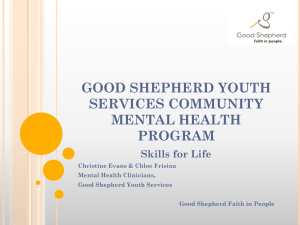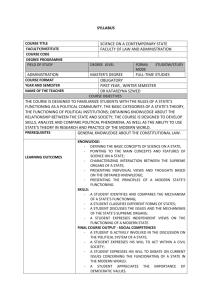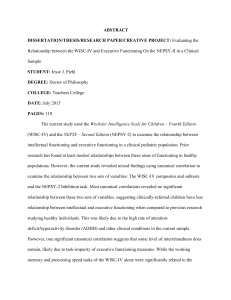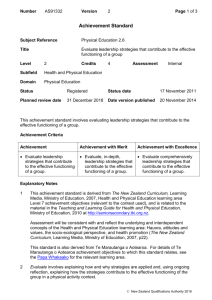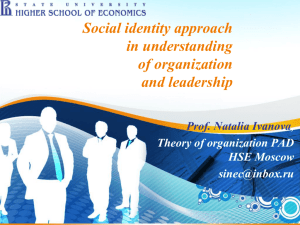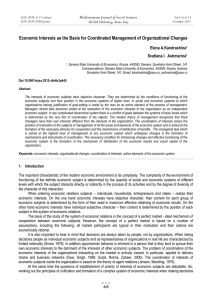Family Dinners
advertisement
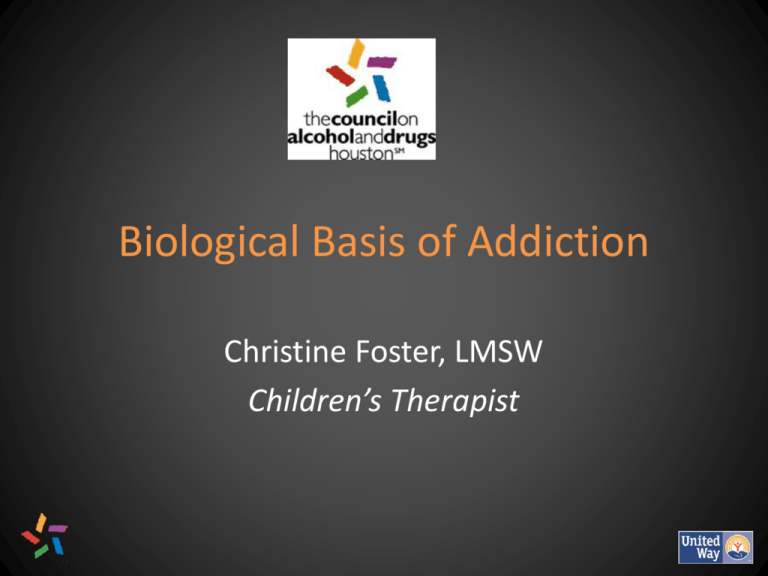
Biological Basis of Addiction Christine Foster, LMSW Children’s Therapist Effects of Substance Abuse: Conception – Age 11 Photo courtesy of Sterling Clarren, MD – Brain at 6 wks Faces in Fetal Alcohol Syndrome What we see What we think What may be really What we can do going on ► Doesn’t follow rules ▪Noncompliance ▪Attention Seeking ▪Stubborn ▪Purposeful ●Difficulty translating ♦Check for understanding verbal directions into ♦Repeat instructions action ♦Simplify tasks ●Cognitive deficit ► Repeatedly ▪Manipulative ▪Doing it on purpose ▪Willful ●Not able to link cause and effect ●Difficulty generalizing ► Poor social judgment ▪Attention Seeking ▪Poorly parented ▪Impulsive ●Not able to interpret ♦Role play social cues ♦Identify safe external ●Desire to be liked support/s ♦Safety planning ►Easily agitated ▪Poor self control ▪Deviant ●Frustrated ●Disappointed ●Mental health issue makes the same mistakes ♦Provide assistance with organization ♦Structure choices ♦Teach self advocacy ♦Identify and practice coping techniques Texas Office for Prevention of Developmental Disabilities Don’t Talk Don’t Trust Don’t Deal Don’t Feel How do people get better from alcohol and drugs? Effects of Substance Abuse: Ages 12-25 Apoptosis = Pruning 200 billion to 100 billion HYPOFRONTALITY: when Dopamine spikes the cortex actually shuts off How do drugs & alcohol effect the brain during the pruning process? Limbic System Fight or Flight Pleasurable Experiences: Dopamine Dopamine Release 1200 1000 800 600 400 200 0 Food Sex Cocaine Meth 100% 150% 350% 1100% If you arrest here but stop using here Age 12 Arrested Development Effects Stuck in psychosocial stage of development 10% Decrease in Hippocampus functioning (converts information to memory) Increased social disinhibition Risky, impulsive behavior Poor planning & judgment Little ability to weigh consequences Developmental Age of Parents Parents with Fetal Alcohol Syndrome Teen Parents Parents with Arrested Development Practical Applications • Connect Client to Appropriate Service – Parent Coaching, Individual Therapy, In or Outpatient Treatment,12-step, ACA, Alanon • Connect Child to Appropriate Service – Play Therapy, High Risk Classes, Individual or Family Therapy • Teach Parents Executive Functioning Skills • Teach Parents To Teach Executive Functioning Skills Tools for Working with Families • Play: A child’s work • Patterned, Repetitive, Predictable & Rhythmic • Praise Executive Functioning in Parents • Teach Parents What To Say During Family Dinners • Behavior Modification Contracts Dopamine-Releasing Chemicals • • • • • • • • • • • • Alcohol & Sedative/Hypnotics Opiates/Opioids Cocaine Amphetamines Entactogens (MDMA) Entheogens/Hallucinogens Dissociants (PCP, Ketamine) Cannabinoids Inhalants Nicotine Caffeine Anabolic-Androgenic Steroids Prefrontal Cortex Thinking: Executive Functioning 1. 2. 3. 4. 5. 6. 7. Abstract; conceptual understanding Impulse Control Problem-Solving Decision-Making Judgment Emotion Regulation/Frustration Tolerance Ability to Feel Empathy References •Califano Jr., Joseph (2009),How to Raise a Drug-Free Kid, The Straight Dope for Parents. •Giedd. J. N. (2004).Structural magnetic resonance imaging of the adolescent brain. Annals of the New York Academy of Sciences, 1021, 77-85. •Spear, L. P. (2002). Alcohol’s effects on adolescents. Alcohol Health and Research World, 26 (4), 287-291. Suggested Reading •Dahl, R.E. & Spear, L.P. (Eds.) (2004). Adolescent brain development: vulnerabilities and opportunities. New York: Annals of the New York Academy of Sciences, Volume 1021. •Dubuc, B. (n.d.).The brain from top to bottom. McGill University web site: •http://www.thebrain.mcgill.ca/flash/index_d.html •http://www.childtraumaacademy.com/amazing_brain/index.html •http://fasdcenter.samhsa.gov •http://nofas.org •Landreth, G. (2002). Play Therapy: The Art of the Relationship. Brunner Routledge. •Nestler, E. J., & Malenka, R. C. (2004, March). The addicted brain. Scientific American, 290 (3), 78-85. •Underwood, N. (2009). The teenage brain: Why adolescents sleep in, take risks, and won’t listen to reason. The Walrus Magazine. •Wallis, C. (2004, May 10). What makes teens tick? Time, 163, 57-65. •Walsh, D. (2004). Why do they act that way? A survival guide to the adolescent brain for you and your teen. New York: Free Press.

